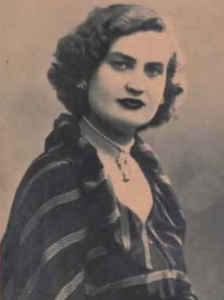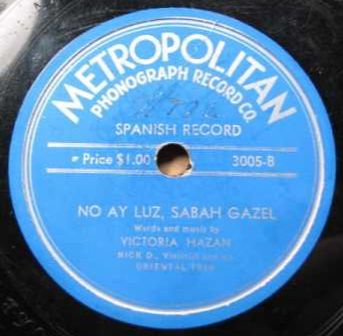Shabbat is almost here
And today, before this Shabbat that coincides with Tu B’Av, the day of love ?, let’s listen to No Ay Luz, Sabah Gazel, a song about an immense love, with Victoria Hazan
 Hello, how are you? I hope well! I am happy because the last Sunday I received the second dose of the vaccine. I had no side effects. And this afternoon I will meet my band Vigüela, for a concert in person! The first we have since August 2020!
Hello, how are you? I hope well! I am happy because the last Sunday I received the second dose of the vaccine. I had no side effects. And this afternoon I will meet my band Vigüela, for a concert in person! The first we have since August 2020!
Whatever your plans for tonight and tomorrow, this Shabbat coincides with the day of love for Judaism, Tu B’Av ?. Why is it this day? If you don’t know, you’ll find out below. And, in addition, we will listen to one of the Sephardic female artists who has best conveyed with her voice the unbridled emotions that love produces. Enjoy it!
Then, please, spread the word.
.
About Victoria Hazan
 Victoria Hazan was our protagonist in the edition of November 6th of 2020. Visit it to read about her biography and the place of her birth, Salihli, in Anatolia, near to Smyrna, and about the Sardes Synagogue.
Victoria Hazan was our protagonist in the edition of November 6th of 2020. Visit it to read about her biography and the place of her birth, Salihli, in Anatolia, near to Smyrna, and about the Sardes Synagogue.
If you are interested in more Sephardic singers from the Oriental tradition, check the previous editions of MBS about:
- Jack Mayesh
- Haim Effendi
- Bienvenida Aguado’s several editions: one, two, three
- Izak Algazi
- Izak Maçoro
- Roza Eskenazi
About Tu B’Av
About “Sabah Gazel”
The title of this piece is No Ay Luz, that in English is “there is no light”. And “Sabah Gazel” is the shape of the piece. What does this mean? Let’s see.
About “Gazel”
 Gazel is how it is called in Turkey the vocal improvisation. While the taksim is the word for the instrumental improvisation. These both terms are widely known in the field of Turkish music. The truth is that the song we will listen to today, starts with a little taksim on the oud and after and then the voice, violin and kanun are alternated.
Gazel is how it is called in Turkey the vocal improvisation. While the taksim is the word for the instrumental improvisation. These both terms are widely known in the field of Turkish music. The truth is that the song we will listen to today, starts with a little taksim on the oud and after and then the voice, violin and kanun are alternated.
About “Sabah”
Sabah is the makam or maqam of the piece. And what is a “makam”? This is a term that we already found in the edition with the nouba Raml Maya: “Very basically, in the Arabic, Persian, Turkish… music a makam is a scale, like a guide for performance, that defines a mood”.
I have found both the spelling “sabah” and “saba”, in sources oriented to the Arabic music as well as the Jewish one (the fact is that these musics share most of the same characteristics, only the lyrics and the topics make a real difference). In the website Pizmonin.org you can delve into this topic of the saba maqam in the religious use in Judaism. And here you can watch a religious Jewish use of the makam Sabah.
During the little research about these topics, I found a paper by Edwin Seroussi, called “Judeo-Islamic sacred soundscapes: The maqamization of the Eastern Sephardic Liturgy”, available here, that I want to highlight if you have interesting in getting deeper into this topic.
- K. Nodar’s Sabah Gazel: Ne Zeman Rahm
- Roza Eskenazi’s Gazel Sabah
- Kemany Minas’ Sabah Gazel
- Haim Effendi’s Sabah Gazel
- Achilles Poulos’ Sabah Gazel
About this specific recording
The cookie of the recording mentions the names of Victoria Hazan and Nick D in the violin (Nick Doneff, the Bulgarian violinist who was also founder of the record labels Me Re and Kaliphon). And his Oriental Trio, according to SephardicMusic.org, were Melko Melkon in the oud and Kanuni Garbis Bakirgian in the kanun. It was recorded in 1942.
It is funny for me that it says “Spanish record”, in the meaning of been from the Sephardic tradition, or Ladino, and indeed I understand the lyrics with my knowledge of modern Spanish language.
Find the lyrics of this recording in Djudeo-español and in English, here.
Click the picture to listen to No Ay Luz by Victoria Hazan:
Shabbat Shalom
Araceli Tzigane | Mapamundi Música
And we share with you one hour of music for joy in this playlist.
To know more about our artists, click here.
May you always find the light in your path.
